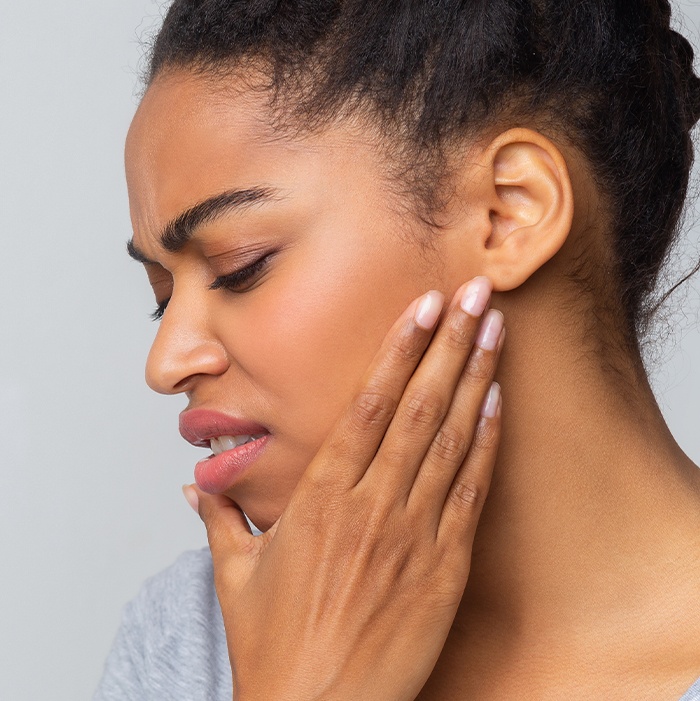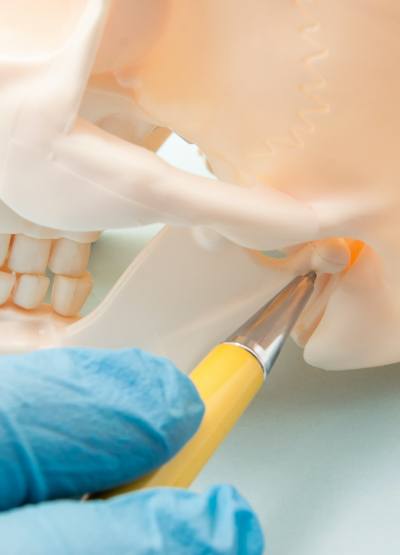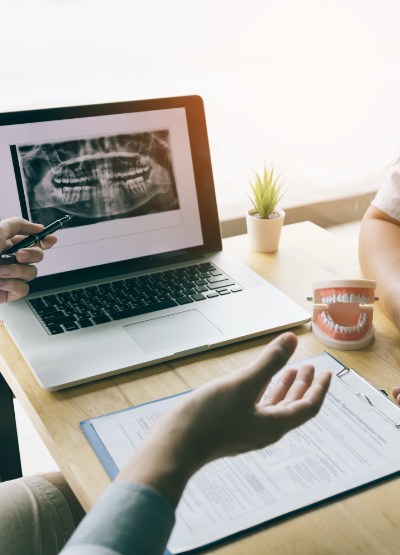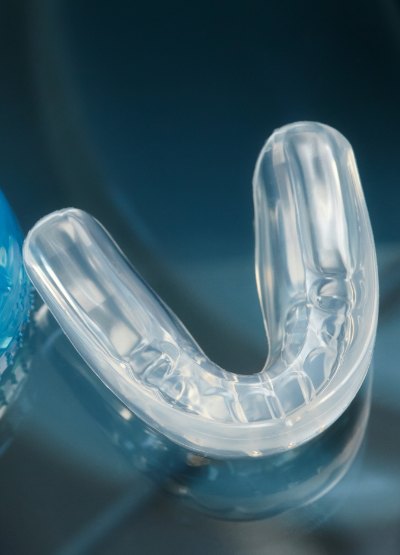TMJ Therapy – Conroe, TX
Make Your Pain Disappear
If you wiggle your jaw from side to side, those little hinges right in front of your ears are your temporomandibular joint (TMJ), or your jaw joint. Like other joints in the body, it can become strained, injured, or arthritic, which can lead to pain not only near the mouth, but in the head and neck as well. Fortunately, this kind of issue is very treatable, and we offer multiple solutions at Conroe Advanced Dentistry. To learn more and get the relief you deserve, contact us today for TMJ therapy in Conroe, TX.

Why Choose Conroe Advanced Dentistry for TMJ Therapy?
- Custom-Made Oral Appliances
- Proven to Stop Chronic Headaches
- Helps Prevent Nighttime Teeth Grinding
What is TMJ?

“TMD” stands for temporomandibular joint disorder, though sometimes conditions associated with this part of the body are just called “TMJ.” It is typically caused by a jaw injury or a misaligned bite, which prevents the jaw muscles from ever fully relaxing. This forces them to overwork and become sore, and this discomfort can easily spread to the nearby muscles in the head and neck. In fact, TMD is one of the most underdiagnosed causes of migraines in the US.
Equilibration / Occlusal Adjustments

If a crooked bite is the source of someone’s TMD pain, we can make small adjustments to the teeth to correct it. This might involve building up certain teeth with restorations or removing a few millimeters of enamel from others. This will help the teeth come together properly and enable the jaw muscles to reach their natural resting position. Once this balance is achieved, any symptoms should quickly go away on their own.
Occlusal Splints

An occlusal splint is a small, custom oral appliance that a patient wears to bed. It prevents the teeth from grinding at night (a common symptom of TMD), and it also places the jaw into a more relaxed position. This enables the muscles to heal and relax, and eventually, the jaw will learn to stay in this new, functional position even when the appliance is removed. Some patients are able to stop wearing their splint entirely, while others will still need to use one every night to maintain relief.

